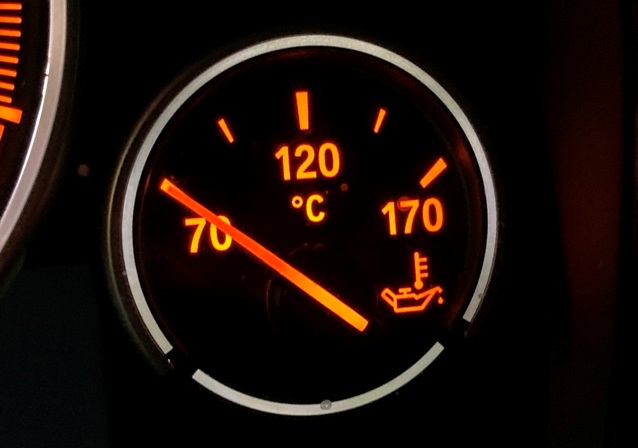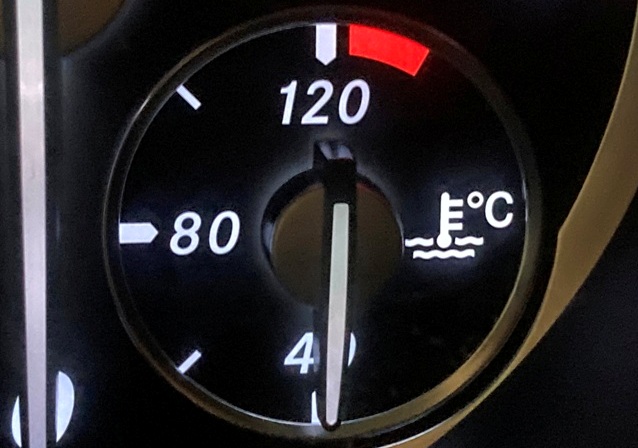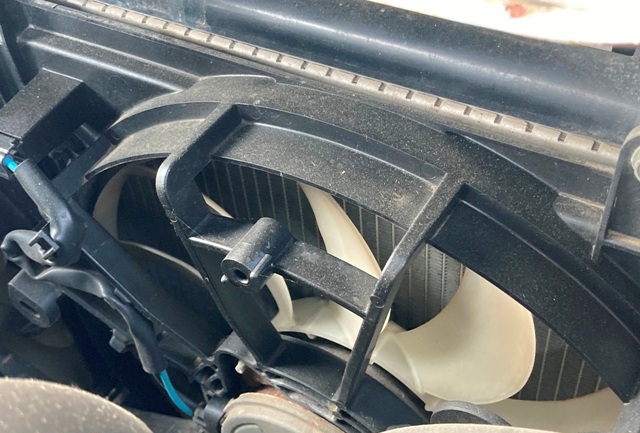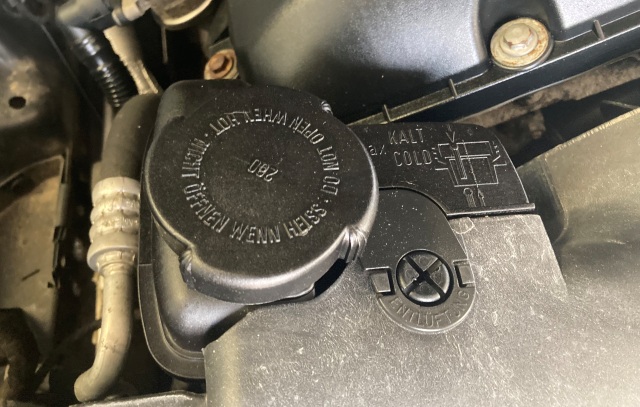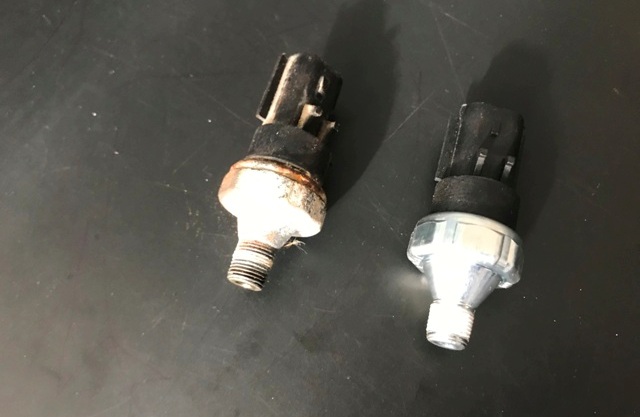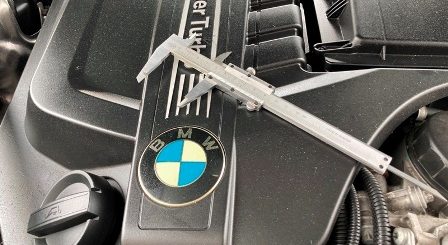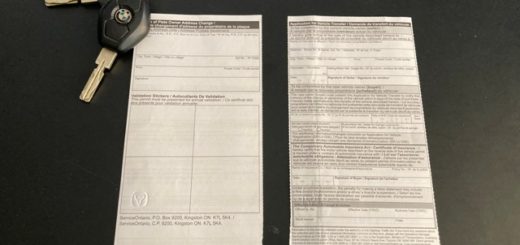How Engine Temperature Gauge Works
Understanding How Engine Temperature Gauge Works
Engine temperature gauge is designed to inform driver of engine coolant temperature. Coolant or antifreeze removes heat and keeps a steady engine temperature. Normal operating engine temperature is not steady and will depend on weather conditions and vehicle operation.
Engine temperature fluctuates between 70 degrees Celsius to 105 Celsius. When driving on highway engine temperature will be lower than idling in traffic, or cold days vs hot days. Usually, normal engine temperature hovers at about 90 Celsius.
Coolant Temperature Gauge
Engine temperature gauge in modern cars is a temperature indicator and does not specify exact or actual coolant temperature values.
Decades earlier cars were equipped with a real temperature gauge. Temp gauge was connected directly to a temperature sensor located on engine block. With real temperature measurement, engine temperature will not be stable.
During driving, temperature needle will dance up and down depending on condition vehicle was operated. People were more mechanically inclined at the time and knew how engines in their cars worked and what engine temperature meant.
Modern cars work differently to avoid misunderstanding, or people will freak out if temperature gauge shows higher engine temperature when idling in 40 degrees Celsius with air conditioning on full blast.
Instead of real-time and real readings, temperatures values are shown as a medium on modern cars temperature gauges. There still are some real temperature gauges installed on certain vehicles, usually sport cars or off road vehicles. Anyways, manufacturers are removing temperature gauges all together, so there is that.
(If you are also looking for a fast and easy solution to sell your car, more here on “How To Sell Your Car Fast”. )
How Engine Temperature Gauge Works
Engine temperature of 80 Celsius and engine temperature of 100 Celsius will be considered normal by ECU. Needle on temperature gauge will not move.
Temperature gauge needle will sit steady in the middle as long as temperatures are within normal parameters. Even when temperatures move from 80 to 100 degrees or from 100 to 80 degrees.
ECU will keep temperature gauge needle stable on a high range of engine temperatures. Only if engine temperature breaks much higher or much lower than normal specifications will ECU start to move temperature gauge needle upwards or downwards.
Details on What to Do if Your Car Overheats.
Last decades some manufacturers decided to remove engine temperature gauge all together. Slap an overheating red light on instrument cluster and call it a day. Anyways, very few people bother to look at temperature gauge or know what it means. Also, is cheaper to install a temperature light than a temperature gauge.
Temperature gauge needle is designed to sit at middle when engine is within temperature operating parameters. Temperature gauge showing too low or too high readings insinuates a problem with cooling system.
Low Engine Temperature Gauge Reading
If temperature gauge needle has become sluggish to reach normal operating temperature or stays on “COLD” when car has reached operating temperature then you might have a problem with cooling system. Thermostat stuck open for example.
Common causes of lower than normal engine temperature are:
- Thermostat stuck open: While not as dangerous as being stuck closed, a stuck open thermostat will affect engine operation. Fuel efficiency is reduced and engine performance will suffer. When thermostat is stuck open, coolant will circulate continuously reducing engine temperature below optimal levels.
- Failure of Temperature Sensor: Modern car have electrical water pumps and controllable thermostats. If temperature monitoring sensor fails, vehicle ECM will get false temperature readings and can keep thermostat open, lowering engine temperature.
- Temperature gauge Failure: Temperature gauge displays temperature on your dashboard. Failure of temperature gauge can show higher or lower engine temperature than real values.
- Radiator Fan Failure: Cars have electrical radiator fans to cool coolant flowing thru radiator. If control unit fail, it can keep radiator fans running continuously decreasing engine temperature below optimal parameters.
Temperature gauge needle can rise on very hot days, this is normal. However, if you see temperature gauge needle going higher and close to upper red line, pull over as this indicates engine is overheating.
High Engine Temperature Gauge Reading
Most common causes of high engine temperature are:
- Thermostat Stuck Closed: If thermostat in your car is stuck closed, coolant will not circulate to radiator and your engine will overheat. Overheating is number one enemy of internal combustion engines. Stop driving as soon as you can if you see temperature gauge hitting overheating mark or you get a Overheating Warning Light.
- Low coolant level: Coolant removes heat from your engine and keep engine temperature within normal specifications. Heat removing capabilities will be reduced if engine coolant level is low and engine will overheat. Pull over and check coolant level if your car is overheating, water can be used as coolant in an emergency.
- Water pump failure: water pump circulate coolant from engine to radiator and back to engine, keeping a normal engine operation temperature. Engine will overheat if water pump fails as coolant circulation will be interrupted.
- Temperature sensor failure: Engine temperature sender sensor controls temperature gauge in your instrument cluster. Faulty temperature sender sensor can cause temperature gauge to show high temperature reading even when engine temperature is normal.
- Head Gasket Failure: This is a rare occurrence, but it happens sometimes. Head gasket can leak coolant inside engine or exhaust gases into cooling system. Failure of head gasket will raise engine temperature to overheating levels, temperature gauge in your dashboard will display high engine readings.
Driving a car when engine is overheating will cause irreparable damage to engine in a very short time, minutes. More details here on Causes of Engine Overheat and what to do if that happens.
Radiator Fan Failure
Radiator fans are part of cooling system and are located next to radiator. Fans will pull cold air thru radiator, lowering radiator temperature and keeping a constant coolant temperature. Radiator fans are mechanically driven or electrically operated, with vast majority being electrically operated.
Failure of radiator fans will cause engine overheating, especially when Air Conditioning is on or when vehicle is idling (stuck in traffic for example).
Coolant Temperature Sensor
Engines temperature is controlled by vehicle ECM utilizing radiator, thermostat, water pump and radiator fan. Live temperature data in fed to ECM by engine temperature sensor. Engine temperature sensor is located directly on engine block in full contact with engine coolant.
On newer vehicles engine temperature sensor is integrated on thermostat housing. Live data about coolant temperature and thermostat valve positioning is collected and sent to ECM.
Failure of temperature sensor can cause temperature gauge to show false reading than real coolant temperature. Temperature gauge can show either higher or lower false readings.
(If you are also looking for a fast and easy solution to sell your car, more here on “How To Sell Your Car Fast”. )
Comments: If you have any questions or suggestions related to this post or Used Car Toronto in general, don’t hesitate to use comment section below.


